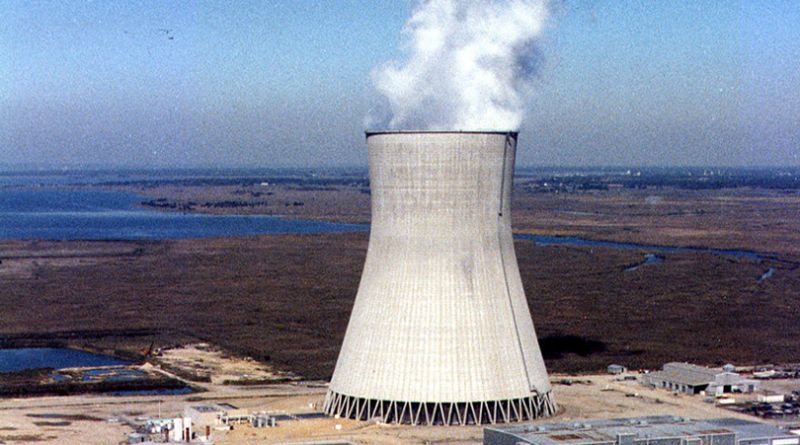DOVER – The annual Toxics Release Inventory (TRI) data report from Delaware’s industrial facilities as compiled by DNREC’s Emergency Prevention and Response Section show continued progress by the state in reducing toxic releases into the environment, with an overall decrease in toxic waste of 14% from 2015 statistics when compared to 2014 figures. The latest report also indicates that there’s still work to be done, however: While TRI data recorded a decrease in onsite releases to air, onsite releases to both water and land increased – all as compared to the state’s TRI figures for 2014, the most recent year for DNREC’s compiling the data.
 Total onsite releases were up 23% in Delaware for 2015 – with releases to air down 12 percent, releases to water up 32 percent, and releases to land up 62 percent. Onsite releases represent only a very small portion of total TRI reported waste. For 2015, about 1 percent of the total-reported TRI waste was released onsite, while 2.6 percent was transferred off-site for treatment or disposal, and 96.3 percent was managed onsite through treatment, energy recovery, and recycling operations by the facilities generating the waste. Total waste for 2015 was down 14 percent compared with 2014.
Total onsite releases were up 23% in Delaware for 2015 – with releases to air down 12 percent, releases to water up 32 percent, and releases to land up 62 percent. Onsite releases represent only a very small portion of total TRI reported waste. For 2015, about 1 percent of the total-reported TRI waste was released onsite, while 2.6 percent was transferred off-site for treatment or disposal, and 96.3 percent was managed onsite through treatment, energy recovery, and recycling operations by the facilities generating the waste. Total waste for 2015 was down 14 percent compared with 2014.
Although overall onsite releases are up for 2015 TRI reporting, Delaware has seen a 61 percent reduction in toxic releases over the last 18 years – since 1998, when TRI reporting requirements were expanded to include a larger list of reporting facilities. The reporting of nitrate compounds released to water again had a major impact on the overall onsite releases, accounting for 81% (3.7 million pounds) of the total onsite releases. Releases for nitrate compounds were up by 837,000 pounds compared to 2014.
Increases in production and closure of facilities also had an impact on TRI reporting for 2015 – a year when the state’s Production Index (PI) for all Delaware facilities was 1.07, which signified a seven percent increase in production over 2014. Facilities report a Production Index (PI) for each chemical used in production, along with TRI release and waste management data. Because the PI is the amount of production or activity directly associated with demand for the chemical being reported, it provides one way to estimate the impact of the economy on TRI data. PI is reported as a number, representing the ratio of how production increased or decreased compared to the previous year. A facility reporting an increase of 10 percent would report its PI as 1.10, while a facility reporting a decrease of 10 percent would production as 90 percent of the previous year, a PI of 0.90. A facility having the same production level as the previous year would report the PI as 1.0. For 2015, of 184 reports by Delaware facilities with PIs, 68 reported increases in production and 104 reported decreases. The remaining 12 PI reports had a 2015 production level equal to the previous year. All told, the average PI reported was 1.068 – again, when rounded off, a seven percent increase compared to 2014’s production level.
The major changes impacting the increases and decreases for the year are covered below in the Delaware TRI summary and in greater detail throughout the report.
Releases to air, land and water in Delaware are permitted by DNREC under rigorous environmental standards at both the national and state level. Permits granted by the department allow for limited discharge of pollutants within these standards that have been established both for minimizing impacts to the environment and risks to public health.
What is TRI?
The Toxics Release Inventory (TRI) is a publicly available data set containing information reported annually since 1987 for toxic chemicals manufactured, processed, or otherwise used by certain facilities in Delaware and throughout the United States. TRI was established in 1986 under Title III, Section 313, of the Federal Superfund Amendments and Reauthorization Act (SARA 313) to provide information to the public about the presence and release of toxic chemicals in their communities. Title III is also known as the Emergency Planning and Community Right-to-Know Act (EPCRA).
Who must report?
Facilities that are required to the government under TRI must meet the following criteria:
1) The facility must be covered under specific listed North American Industry Classification System (NAICS) codes, or be a federal facility. Primarily, these NAICS codes include manufacturing facilities, oil and coal fired electric facilities, and bulk petroleum terminals.
2) The facility must have 10 or more full time employees.
3) The facility must manufacture or process over 25,000 pounds or otherwise use over 10,000 pounds of a TRI chemical. The list of reportable TRI chemicals includes of 595 individual chemicals and 31 chemical categories. Certain chemicals, such as persistent bio-accumulative toxins (PBTs), have lower reporting thresholds.
What is reported?
Facilities submit reports to Delaware’s Department of Natural Resources and Environmental Control (DNREC) and the U.S. Environmental Protection Agency (EPA) on the waste management activities for the covered TRI chemicals. These activities include:
1) Direct releases onsite to the environment. These releases are to air, water, and land.
2) Waste managed onsite, which includes recycling, treatment, and energy recovery.
3) Waste managed offsite, which includes recycling, treatment, energy recovery, or disposal.
Data from Delaware facilities is compiled by DNREC and the results are summarized in an annual report. A national analysis of the TRI data is provided by EPA’s annual report. It is noteworthy that TRI only requires reporting of releases and waste management activities, but not amounts used. The control of those releases is achieved separately through a variety of DNREC and EPA permits, laws and regulations.
Delaware 2015 TRI Results Summary
For 2015, 59 facilities submitted reports for 90 different chemicals. Approximately 4.6 million pounds were reported as being released onsite, an increase of 849,000 pounds or 23 percent compared to 2014. Of this amount, approximately 29,000 pounds were released to land, while 712,000 pounds were released to air, and approximately 3.9 million pounds were released to water.
Onsite Releases
• To Land: Onsite releases to land increased by 11,000 pounds (62%) compared to 2014.
- This increase was primarily attributable to the Delaware Army National Guard training site range in New Castle, with its first-time TRI reporting of 16,000 pounds of lead released to land – which was 55 percent of the state’s total releases to land. (This site did not report previously because of troop deployments; the training site range has not been used extensively in recent years.)
- Lead was also the largest reported release to land, with 99.8% of the lead releases to land reported by the National Guard training range. A National Guard spokesman told DNREC that “The Delaware Army National Guard Rifle Range follows a lead management plan, and is in the process of changing to lead-free” ammunition, noting “should the site ever be converted for another use in the future, the range will be remediated in accordance with all applicable local, state and federal laws.”
• To Air: Onsite releases to air were down approximately 93,000 pounds (12%) compared to 2014.
o Reductions in releases to air were reported by several companies, with the largest decrease being reported by Chemours Edge Moor of carbonyl sulfide, down 89,000 pounds compared to 2014. This reduction was primarily due to this facility’s ceasing production in September, 2015.
- Though sulfuric acid was reported as the largest release to air at 226,000 pounds, with most of it being released by PBF Energy’s Delaware City refinery, the total figure represented a 73,000-pound reduction by the refinery compared to its 2014 sulfuric acid emissions to air.
• To Water: Total onsite releases to water increased by approximately 931,000 pounds (32%) compared to 2014.
- The increase in releases to water was primarily due to increases of nitrate compound releases reported by the Delaware City refinery, up 622,000 pounds compared to 2014. NOx was scrubbed out of the refinery’s air emissions and diverted to water.
- Nitrate compounds were also reported as the largest release to water at 3.7 million pounds, with 3.4 million pounds (90%) released by the Delaware City Refinery and 318,000 (8 %) released by Perdue Farms Georgetown.
Offsite Transfers
• Waste transferred offsite decreased by 1.3 million pounds (10%) compared to 2014. Reductions in offsite recycling, offsite disposal, offsite treatment, and offsite energy recovery offset increases in releases to publicly owned treatment works (POTWs).
• Largest Change: The largest reduction reported was for offsite disposal of manganese compounds by Chemours Edge Moor, due again to this facility’s ceasing operations in September of 2015 – down 776,000 pounds compared to 2014.
• Largest Chemical Reported: Lead compounds were the largest reported chemical amount transferred for offsite recycling at 4.3 million pounds, with 2.55 million pounds reported by the Johnson Controls Battery Plant and 1.76 million pounds reported by the Johnson Controls Distribution plant, both facilities located in Middletown.
Onsite Management
• Waste managed onsite decreased by 73.6 million pounds (15%) compared to 2014. Decreases in onsite treatment and onsite recycling were partially offset by a small increase in onsite energy recovery.
• Largest Changes: Multiple facilities reported increases and decreases of over a million pounds for onsite management compared to 2014. The largest reduction reported was for onsite treatment of hydrogen sulfide by PBF Energy’s Delaware City refinery, with a reduction of 72.7 million pounds compared to 2014. The largest increase was for the onsite treatment of hydrochloric acid by Chemours Edge Moor, up approximately 1.3 million pounds compared to 2014.
• Largest Chemical Reported: Hydrogen sulfide was also the largest reported chemical amount managed onsite, with 360.9 million pounds being treated onsite, with the majority of that amount being reported by the Delaware City refinery.
Source: DNREC





